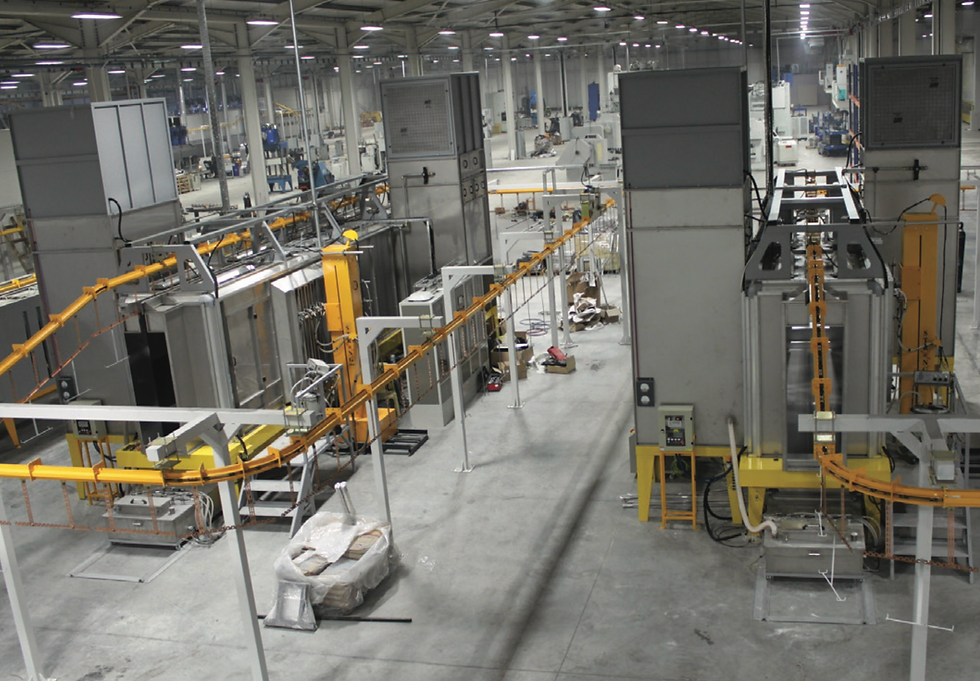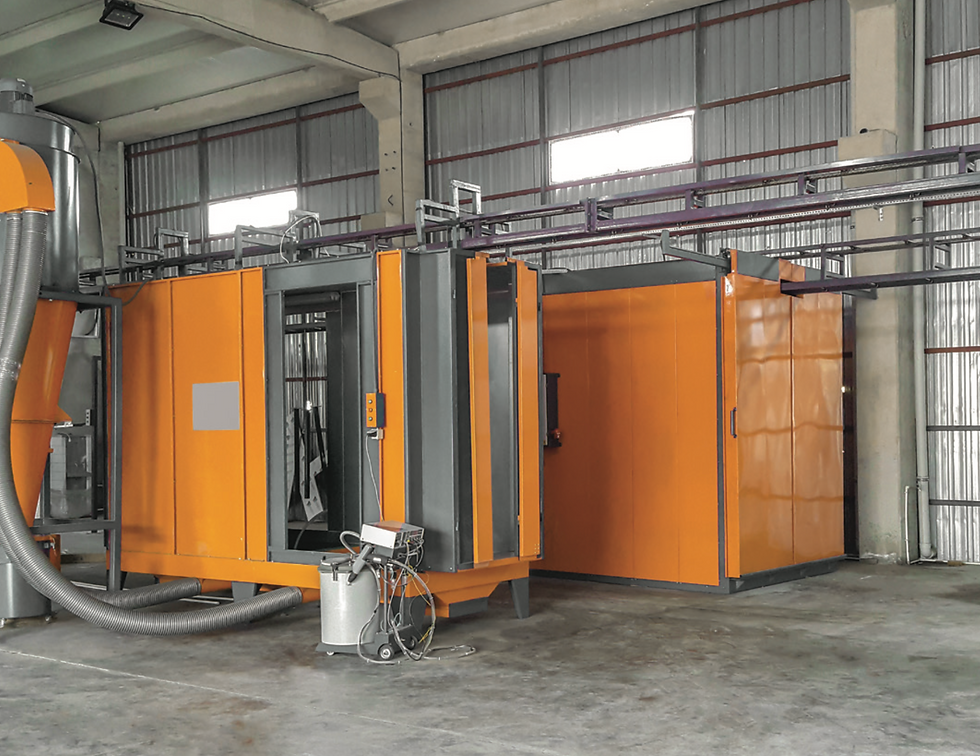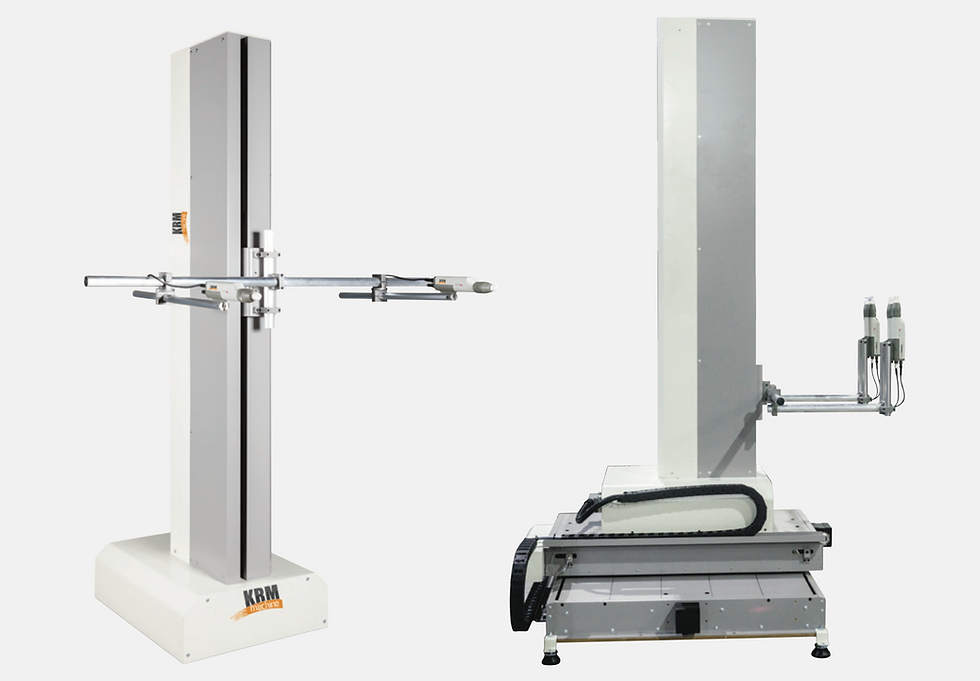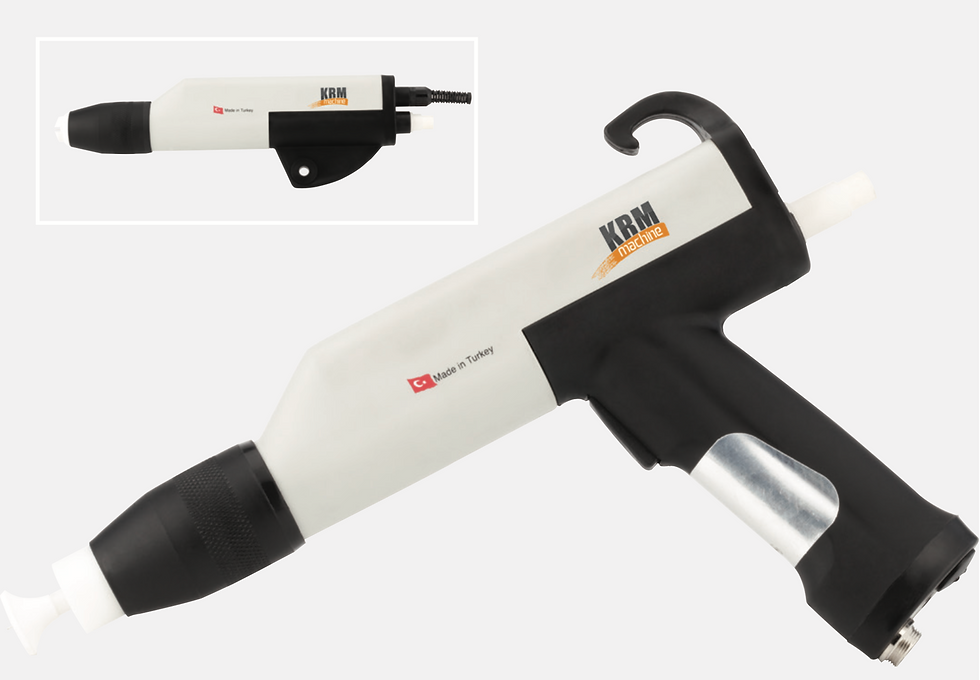Enamel Coating Plants: Industrial Solution for Durability and Aesthetic Excellence
- KRM Elektrostatik

- May 6
- 3 min read
What Is Enamel Paint?
Enamel paint is a glass-based coating typically applied to metal surfaces. Once heated, it forms a hard, durable finish. Known for its high resistance to heat, chemicals, scratches, and abrasion, enamel also offers a glossy appearance and long-lasting performance, making it ideal for both industrial and household applications.
What Are Enamel Coating Plants and How Do They Work?
Enamel coating plants are production systems that handle the entire process from raw materials to finished coated products. Metal surfaces are first pre-treated, then coated using specialized spraying or dipping methods, and finally cured in high-temperature furnaces to achieve a tough enamel layer.
Main Stages in Enamel Coating Plants:
Surface Preparation (Chemical cleaning, sandblasting, degreasing)
Enamel Application (Spraying, dipping, or electrostatic methods)
Curing (Furnaces operating up to 700°C)
Cooling and Quality Control
Advantages of Enamel Coating Plants
✅ High Heat ResistanceIdeal for ovens, stoves, and heaters due to their ability to withstand extreme temperatures.
✅ Chemical and Corrosion ResistanceOffers long-term durability against acids, detergents, and salt exposure.
✅ Hygienic and Food-Safe CoatingIts non-porous structure prevents bacteria accumulation, making it suitable for cookware and kitchen interiors.
✅ Aesthetic and Glossy FinishProvides a glass-like shine and maintains color vibrancy over time—no yellowing or fading.
Where Are Enamel Coating Systems Used?
Enamel coating technology is widely used across industries:
Home appliances (oven interiors, stove surfaces)
Kitchenware (pots, pans, kettles)
Bathroom fixtures (sinks, bathtubs)
Industrial kitchen systems
Road signs and information panels
Heating devices and stove bodies
Key Considerations When Setting Up Enamel Plants
🔍 Furnace Technology Select furnaces that offer uniform heat distribution and reach the high curing temperatures required for enamel.
🔍 Coating Method Choose the appropriate application method (spray, electrostatic, or dipping) based on product size and shape.
🔍 Surface Preparation Units Proper cleaning and preparation are critical for optimal paint adhesion and final quality.
🔍 Energy Efficiency Modern systems with energy-efficient components reduce operational costs and environmental impact.What Is Enamel Paint?
Enamel paint is a glass-based coating typically applied to metal surfaces. Once heated, it forms a hard, durable finish. Known for its high resistance to heat, chemicals, scratches, and abrasion, enamel also offers a glossy appearance and long-lasting performance, making it ideal for both industrial and household applications.
What Are Enamel Coating Plants and How Do They Work?
Enamel coating plants are production systems that handle the entire process from raw materials to finished coated products. Metal surfaces are first pre-treated, then coated using specialized spraying or dipping methods, and finally cured in high-temperature furnaces to achieve a tough enamel layer.
Main Stages in Enamel Coating Plants:
Surface Preparation (Chemical cleaning, sandblasting, degreasing)
Enamel Application (Spraying, dipping, or electrostatic methods)
Curing (Furnaces operating up to 700°C)
Cooling and Quality Control
Advantages of Enamel Coating Plants
✅ High Heat ResistanceIdeal for ovens, stoves, and heaters due to their ability to withstand extreme temperatures.
✅ Chemical and Corrosion ResistanceOffers long-term durability against acids, detergents, and salt exposure.
✅ Hygienic and Food-Safe CoatingIts non-porous structure prevents bacteria accumulation, making it suitable for cookware and kitchen interiors.
✅ Aesthetic and Glossy FinishProvides a glass-like shine and maintains color vibrancy over time—no yellowing or fading.
Where Are Enamel Coating Systems Used?
Enamel coating technology is widely used across industries:
Home appliances (oven interiors, stove surfaces)
Kitchenware (pots, pans, kettles)
Bathroom fixtures (sinks, bathtubs)
Industrial kitchen systems
Road signs and information panels
Heating devices and stove bodies
Key Considerations When Setting Up Enamel Plants
🔍 Furnace Technology Select furnaces that offer uniform heat distribution and reach the high curing temperatures required for enamel.
🔍 Coating Method Choose the appropriate application method (spray, electrostatic, or dipping) based on product size and shape.
🔍 Surface Preparation Units Proper cleaning and preparation are critical for optimal paint adhesion and final quality.
🔍 Energy Efficiency Modern systems with energy-efficient components reduce operational costs and environmental impact.

Conclusion: The Key to Long-Lasting Coatings – Enamel Plants
In today’s industrial production, durability and aesthetics go hand in hand. Enamel coating plants deliver both—ensuring your products remain visually appealing and resistant over time
📌 Investing in the right furnace, application system, and layout ensures your enamel plant adds lasting value to your production line.




Comments